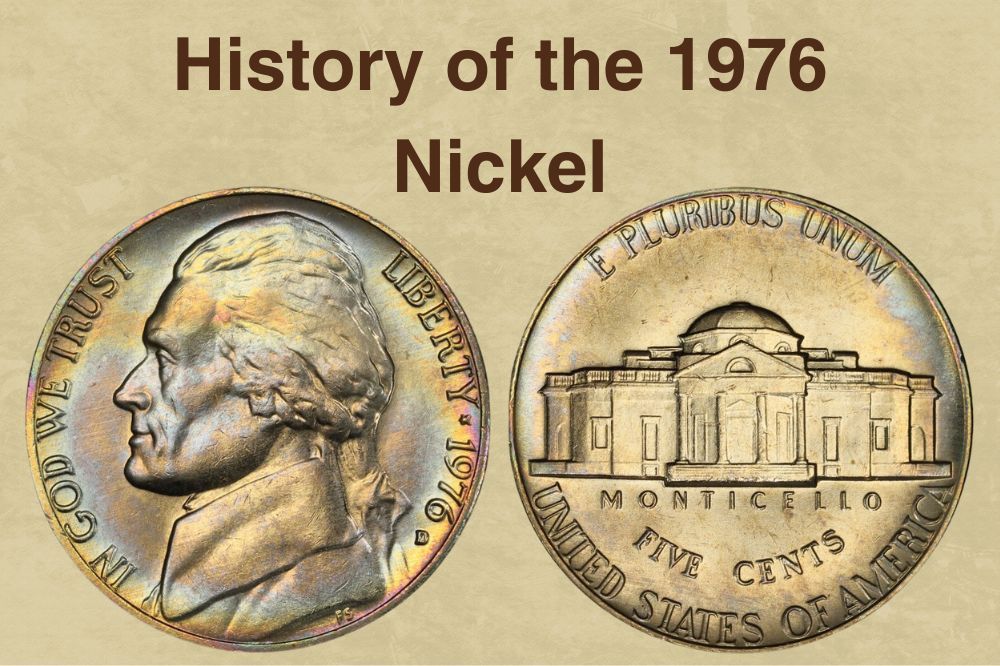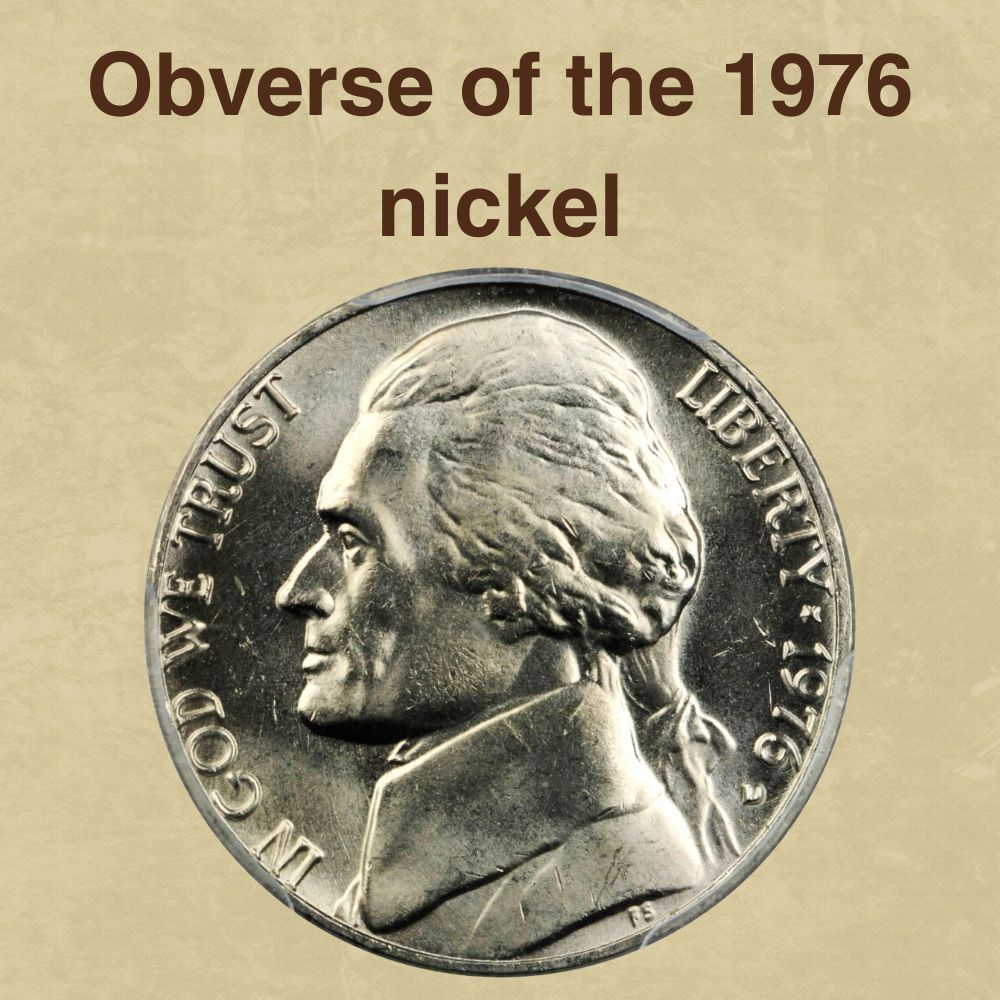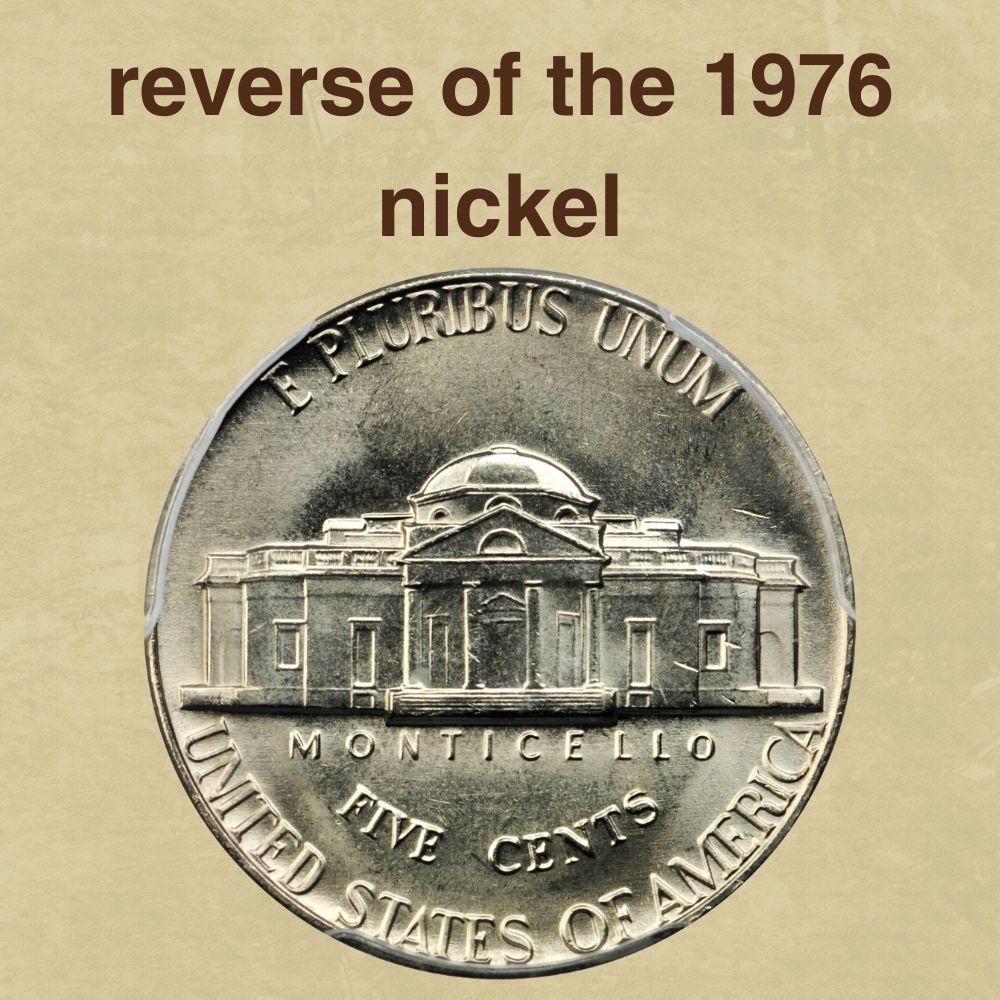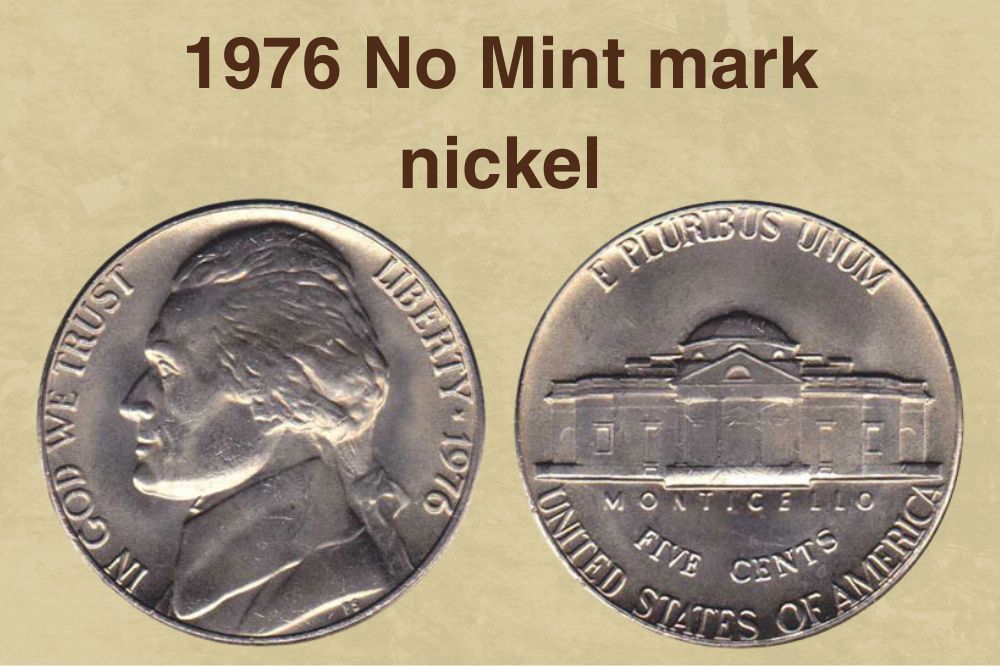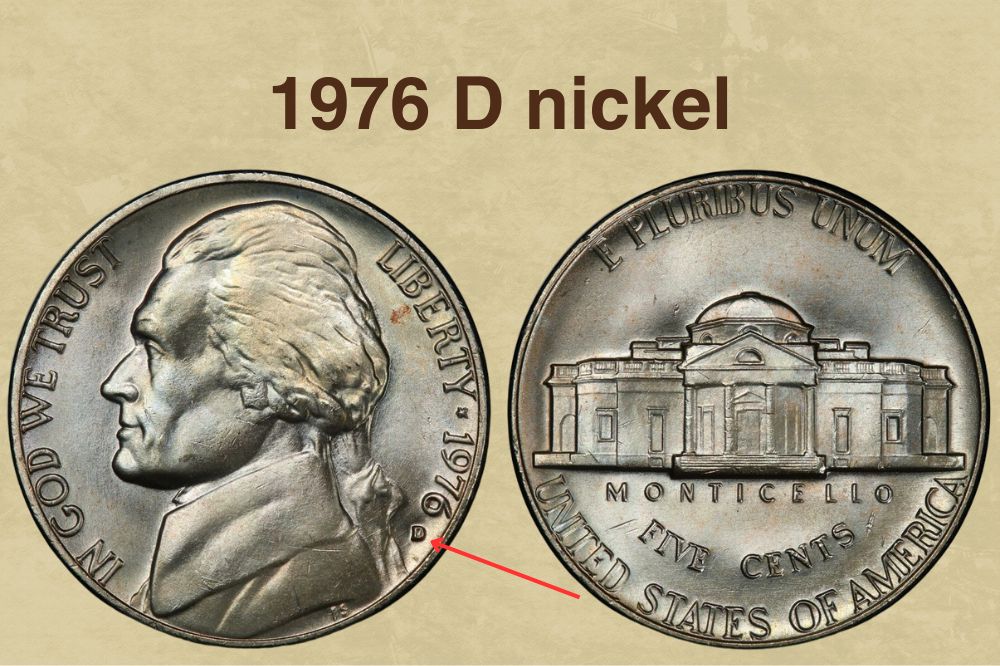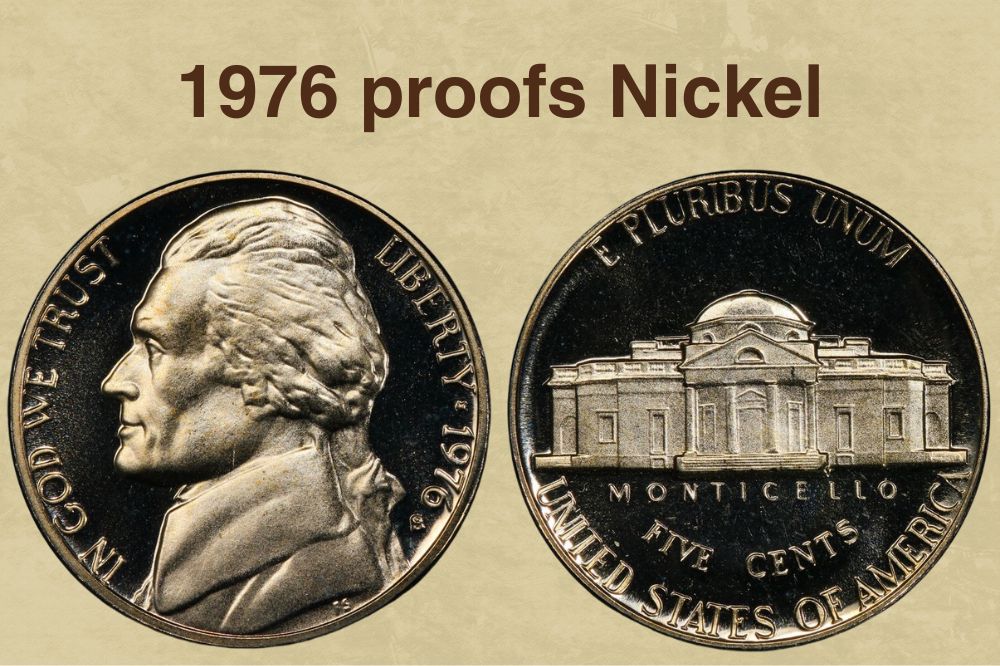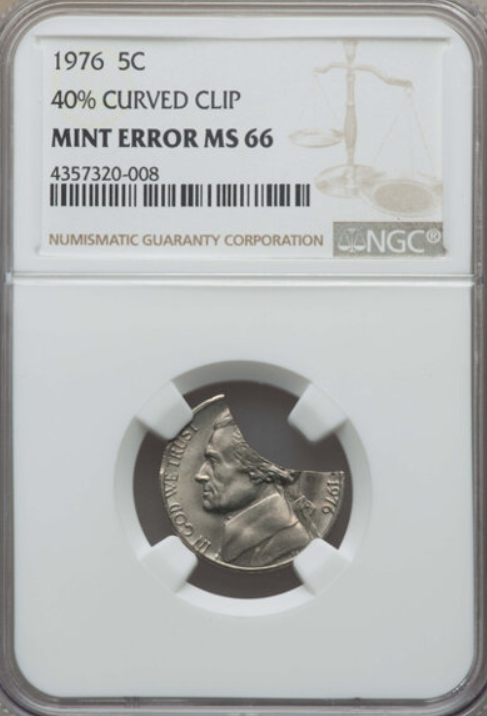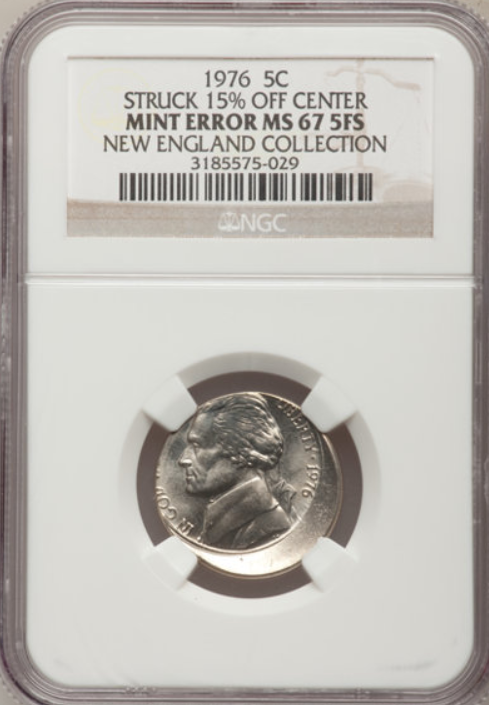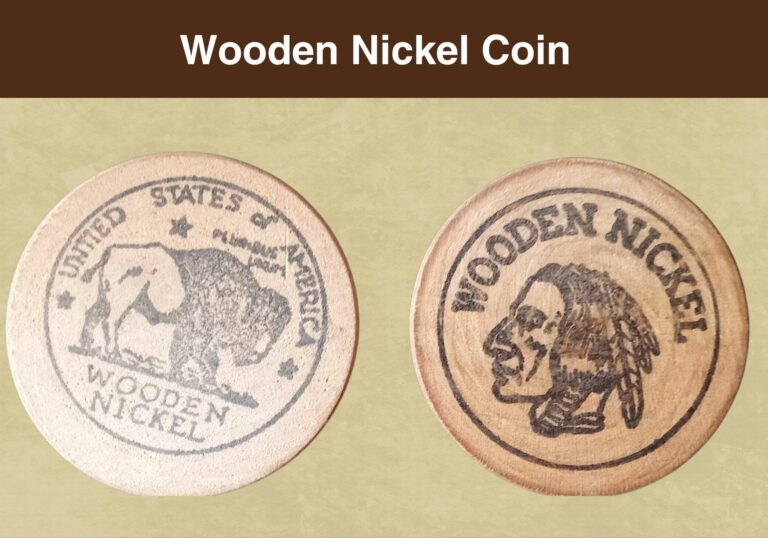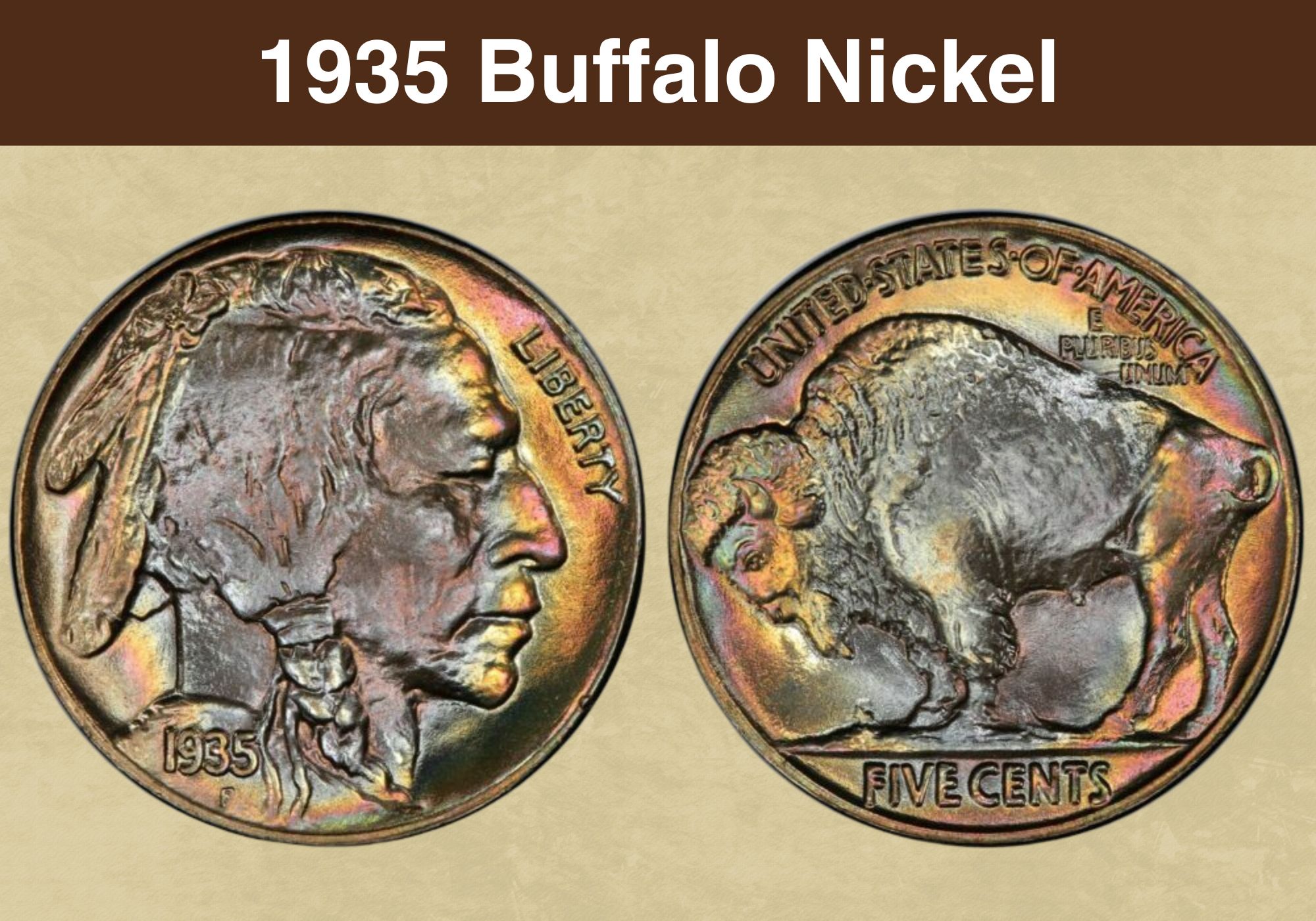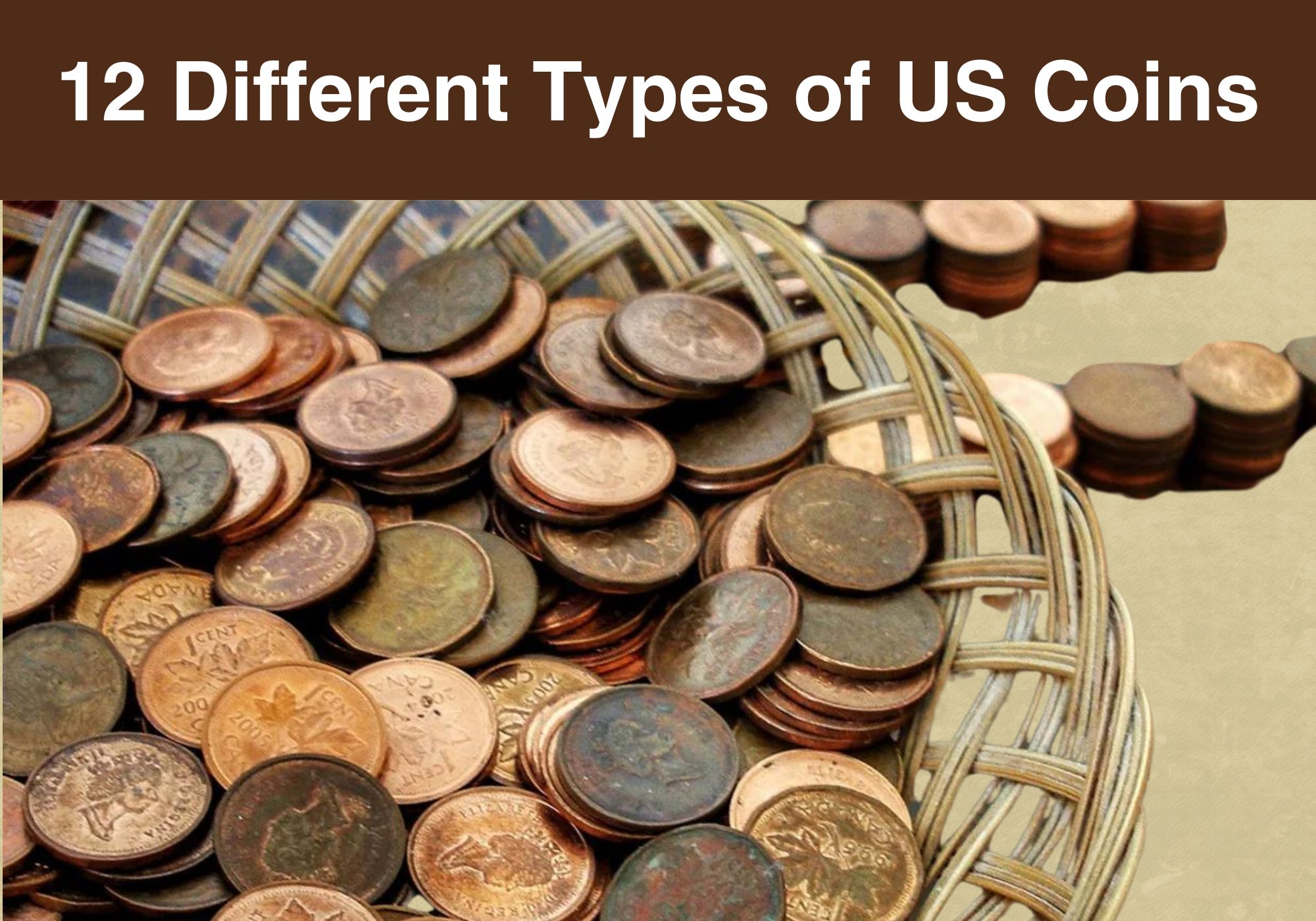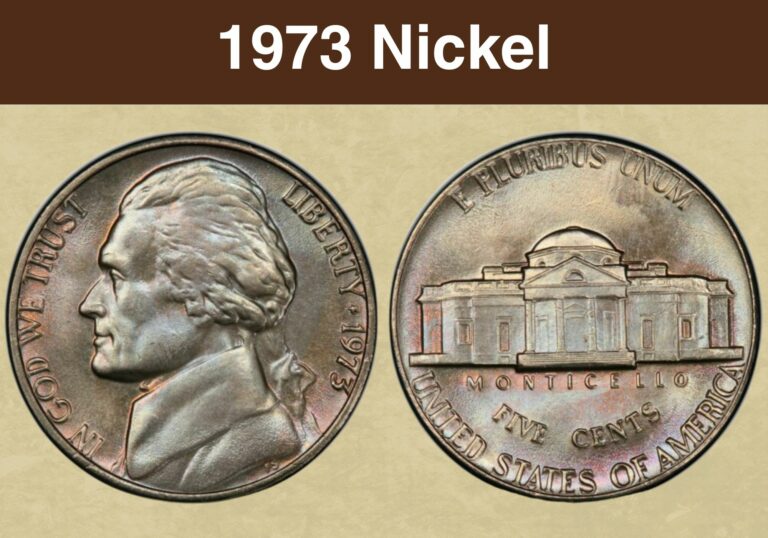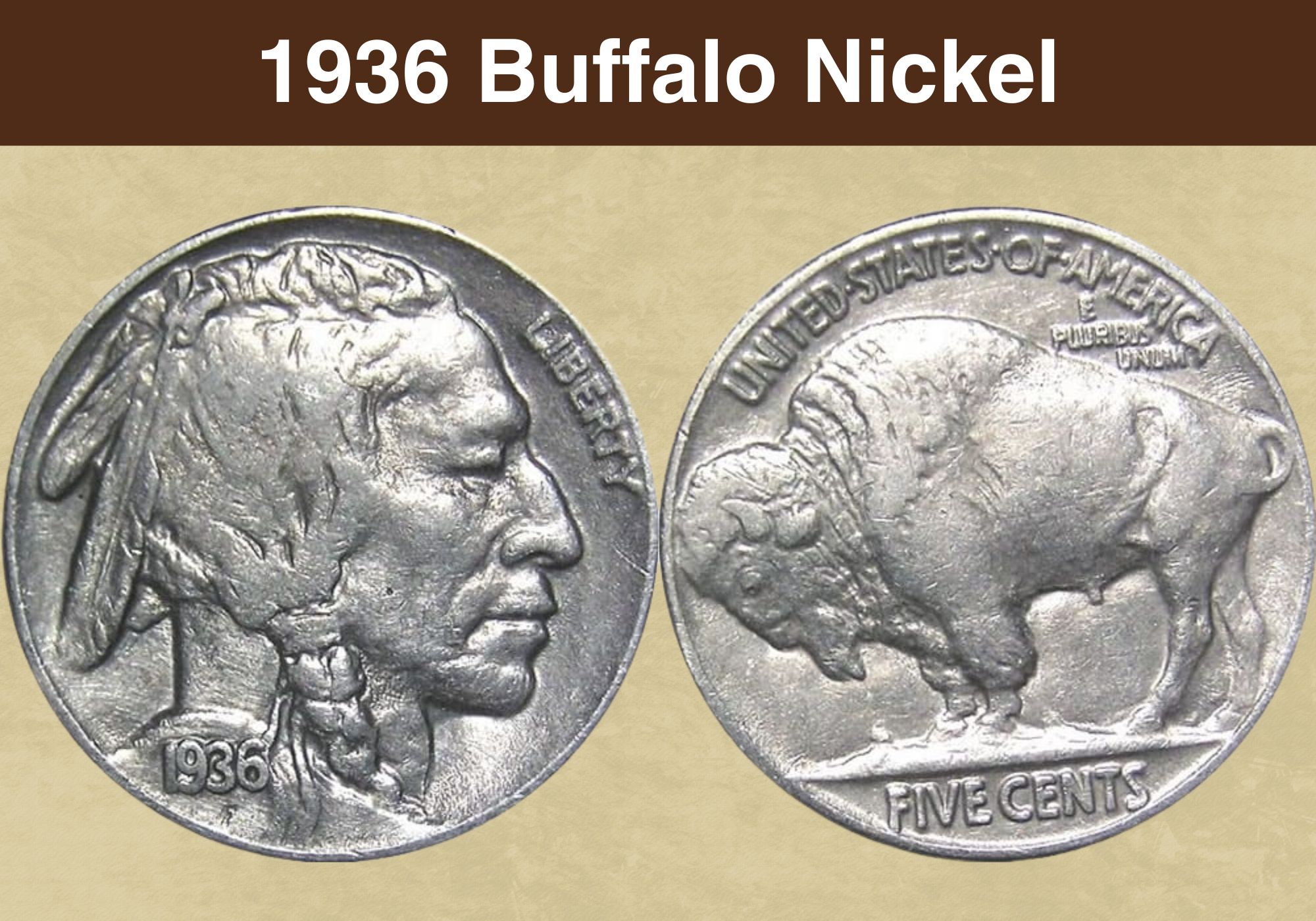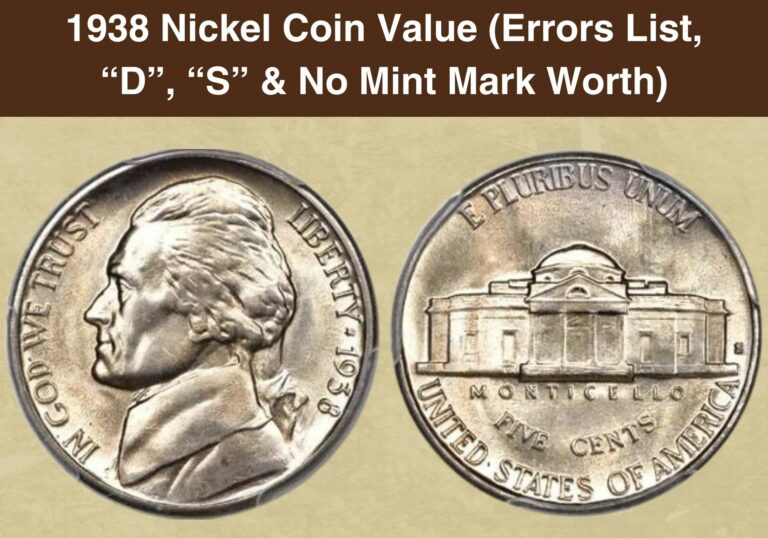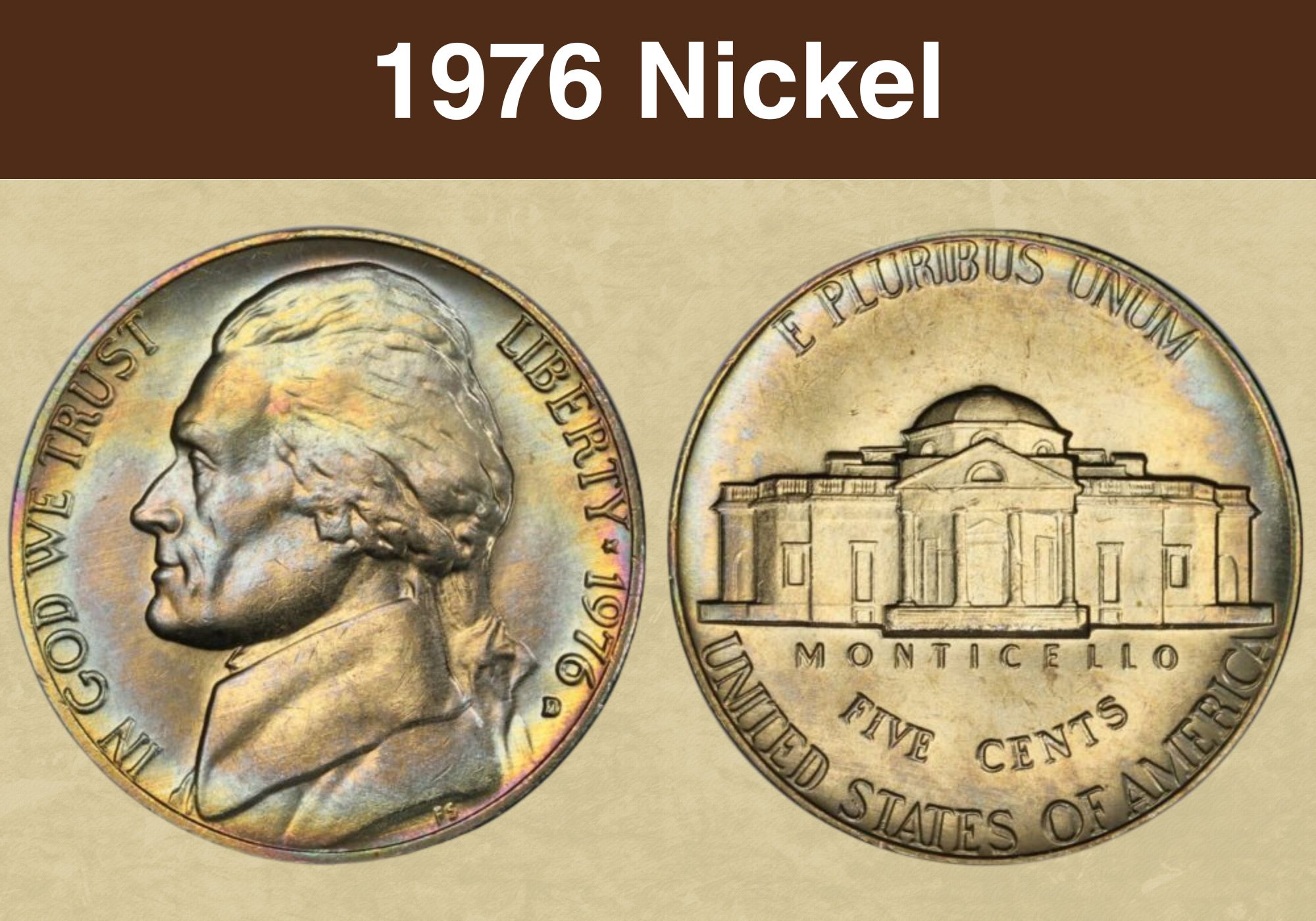
Coin Value Contents Table
- 1976 nickel value Chart
- History of the 1976 Nickel
- 1976 nickel Types
- Features of the 1976 Nickel
- Grading of the 1976 Nickel
- 1976 Nickel Value Guides
- 1976 No Mint mark nickel Value
- 1976 D nickel Value
- 1976 proofs Nickel Value
- Rare 1976 Nickel Errors List
- Where to Sell Your 1976 Nickel ?
- FAQ about the 1976 Nickels
The 1976 nickels are five-cent US coins struck in three mints. The one in Philadelphia minted nickels without the mint mark, while the Denver mint issued regularly strike coins with the engraved D letter.
All proofs came from the mint in San Francisco. The 1976 nickel value significantly varies depending on the mint they come from and each piece’s quality and appearance.
1976 nickel value Chart |
|||
| Condition | 1976 nickel | 1976 D nickel | 1976 S nickel |
| MS 60 | $1 | $1 | / |
| MS 65 | $18 | $14 | / |
| PR 65 | / | / | / |
History of the 1976 Nickel
The Jefferson nickels came out as a replacement for the Buffalo nickels, coins that had been in circulation since 1913. Even though these coins were popular, the US Mint canceled them because of numerous issues with design during striking. The new coinage was dedicated to Thomas Jefferson, born in 1743.
He was one of the principal authors of the American Declaration of Independence and the third President of the new nation. Unfortunately, this lawyer and architect enslaved over 600 African descent people at his Monticello plantation.
In the 1930s, the US Mint prepared a new five-cent design by organizing a competition in 1937. Numerous American sculptors and artists were invited. After reviewing 390 received works, the officials selected Felix Schlag’s conceptual solution as the best.
Schlag was an artist born in Germany who provided an elegant and simple nickel new look, featuring the President’s profile on the obverse and the Monticello image on the reverse coin side. The initial design didn’t include the designer’s initials, but the US Mint added them in 1966.
1976 nickel Types |
||
| Location | Year | Minted |
| Philadelphia | 1976 nickel | 367,124,000 |
| San Francisco | 1976 S proof nickel | 4,149,730 |
| Denver | 1976 D nickel | 563,964,147 |
| Total | / | 935,237,877 |
Nickels with the new design were first issued in 1938 in three mints. The production started in October 1938 because of the required changes on the initial reverse look. Until 1964, the Jefferson nickels had the mint mark on the reverse, to the right of the house.
The initial Jefferson nickel composition changed only once during WWII when the coin contained silver and manganese besides copper. They also had the sizable mint mark above Monticello.
These so-called war nickels’ minting started in October 1942. The standard composition and the mint mark position were returned to the initial state in 1946. Jefferson nickels were produced from 1938 to 2004 when their design was changed.
These coins are popular collectibles nowadays, primarily due to their historical significance. The 1976 Jefferson nickels have the same composition as those from 1938 and almost the same design except for the mint mark location.
Also read: Top 10 Most Valuable Nickels Worth Money
Features of the 1976 Nickel
The 1976 US five-cent coins, known as the Jefferson nickels, were first time issued in 1938. You can recognize a famous Felix Schlag’s design that came with only slight changes in forty years.
The obverse of the 1976 nickel
On the 1976 Jefferson nickel’s obverse side, you can see the bust of Thomas Jefferson wearing the recognizable 18th-century wig. Below the collar’s right corner are the designer’s initials, FS. This coin side also contains two well-known inscriptions framing the President’s profile on the left and right.
The words IN GOD WE TRUST are on the left. Initially used during the Civil War, this motto became official in 1956. Its purpose is to show that the nation’s political and economic prosperity is in God’s hands.
The second inscription struck on the obverse side is LIBERTY, positioned on the right side. It first appeared on a US coin in 1793. In this case, it is divided from the minting year by the star.
The reverse of the 1976 nickel
The 1976 nickel reverse has a dominating image of Monticello, Jefferson’s architectural masterpiece. You can see several inscriptions on this coin side, including MONTICELLO engraved just under the centrally positioned image. The house got a name after an Italian word meaning LITTLE MOUNTAIN.
At the coin’s top is E PLURIBUS UNUM, while the UNITED STATES OF AMERICA is written along the nickel’s bottom edge. The denomination is between the mansion and the country’s name.
1976 nickel Details |
|
| Shape | Round |
| Coin weight | 0.18 ounces (5 grams) |
| Coin thickness | 0.08 inches (1.95 millimeters) |
| Coin diameter | 0.84 inches (21.21 millimeters) |
| Edge | Smooth |
| Compound | 25% nickel and 75% copper |
| Face value | Five cents ($0.05) |
Other features of the 1976 nickel
The 1976 Jefferson nickels were the only currently struck coins the US Mint produced in the original composition. These cupronickel pieces with a diameter of 0.84 inches (21.21 millimeters) weighed 0.18 ounces (5 grams). Nickel gave them an appealing silvery color.
Their shape is round with a plain edge, while their face value is five cents. These lovely nickels are 0.08 inches (1.95 millimeters) thick, making them the thickest US coinage with a small denomination.
Also read: Top 17 Most Valuable Buffalo Nickel Worth Money
Grading of the 1976 Nickel
When you want to check your 1976 nickel’s value, you should send it for grading. It is a way to evaluate it and determine its price range based on several factors. You can expect to get your nickel ranked from POOR to PERFECT UNCIRCULATED, depending on its condition, luster, possible corrosion traces, mint mark, and minting error existence.
| # | Grade |
|---|---|
| 1 | Basal State-1 |
| 2 | Fair |
| 3 | Very Fair |
| 4, 5, 6 | Good |
| 7, 8, 10 | Very Good |
| 12, 15 | Fine |
| 20, 30 | Very Fine |
| 40 | Extremely Fine |
| 50 | About Uncirculated |
| 60 | Mint State |
| 65 | Mint State |
| 70 | Mint State |
Please check our grading guides to know your coin scale, It’s the necessary step to know the exact value of your coin.
Check out now: How to Grade Jefferson Nickel?
1976 Nickel Value Guides
The 1976 nickel value varies based on appearance, grade, origin, and possible errors that occurred during minting. Their best advantage is affordability to beginners, while experienced collectors appreciate them as a part of the series.
1976 No Mint mark nickel Value
In 1976, the Philadelphia mint produced nickels with a total mintage of 367,124,000 coins. They are cheap in XF to AU grades, with an approximate value of $0.05.
The price is slightly higher for the coins in mint state. It is possible to purchase those in MS 60 to MS 63 ranking for $1 to $6. Nickels in higher grades are not particularly costlier, and you can buy them for $6 to $12. The pricest pieces are those ranked MS 66, costing $55.
On the other hand, the auction prices can be high, particularly for rare, excellently preserved specimens. For instance, one nickel in MS 69 grade reached $2,175 on eBay in 2022.
The Full Steps varieties with at least five visible steps on the Monticello are expectedly more valuable. You should pay $45 for the nickel in the MS 64 FS grade, while those ranked MS 65 to MS 66 cost $185 to $1,100.
The most valuable are MS 67 FS nickels, with estimated prices from $2,000 to $3,500. Be aware that it is not their price limit because one 1976 FS nickel in MS 67 grade was sold at a 2010 auction for $4,025.
1976 D nickel Value
The Denver mint struck regular nickels in 1976, with a total mintage of 563,964,147 pieces. Their value in circulated grades is $0.05, while purchasing coins in MS 60 to MS 63 grades cost $1 to $6.
Better-graded pieces are worth about $6 to $10, while the most valuable nickels from this mint with MS 66 ranking cost approximately $42. Auction prices are much higher, and one of these specimens reached $1,700 in 2018 on eBay.
The Full Steps nickel variety from Denver is more valuable than coins from regular strikes. Those in MS 64 and MS 65 grades have a price ranging from $11 to $20, while the 1976 FS nickels ranked MS 66 cost approximately $300. The highest-priced specimens are in MS 67 grade, estimated at $3,500.
1976 proofs Nickel Value
The San Francisco mint produced only nickel proofs in 1976, precisely 4,149,730 pieces. You can purchase coins from PR 60 to PR 65 grades for less than a dollar. Even higher-graded proofs are affordable, with a price range from $2 to $10.
The most expensive 1976 coins with the S mint mark in the PR 70 ranking are assessed at $440. However, one such piece won an auction record of $4,230 at Heritage Auctions in 2015.
Also read: Top 17 Most Valuable Jefferson Nickels Worth Money
Rare 1976 Nickel Errors List
Error coins are a standard part of the minting process. The 1976 nickels came out with a few barely visible to distinct imperfections that make them unique and collectible.
1976 nickels struck on the wrong planchet
One of the common errors appeared when coins were struck on a planchet intended for another, domestic or foreign, denomination. Mints usually destroyed such nickels immediately, but several were released into circulation. You can recognize a few such 1976 nickels that are often worth a lot.
1976 nickels struck on a 10-cent (dime) planchet
This error happened when a dime planchet mistakenly appeared in a nickel press and ended up with the nickel design on the surface. You can notice partial or missing inscriptions on both coin sides due to smaller dime planchet dimensions.
These errors are 0.70 in (17.91 mm) in diameter instead of 0.84 in (21.21 mm), and their weight is 0.07 ounces (2.27 g) instead of 0.18 ounces (5 g).
1976 nickels struck on a Philippine 1-Sentimo planchet
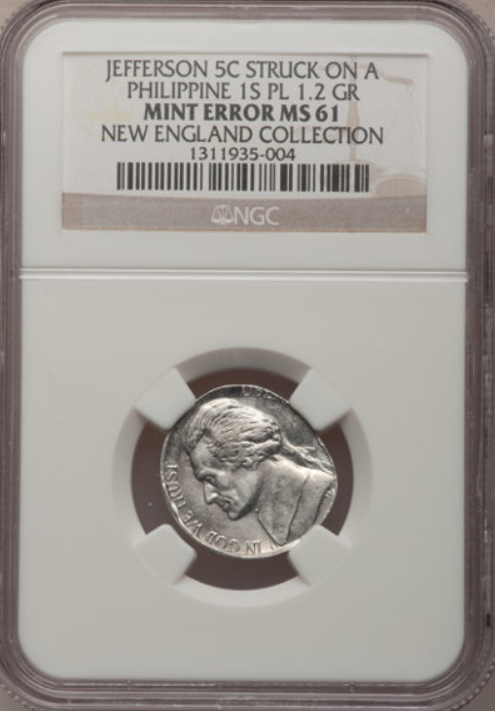
In this case, the American 1976 nickel was struck on a planchet intended for foreign coins, a Philippine Sentimo. This coin’s composition is 95% aluminum with magnesium that weighs only 0.04 ounces (1.2 g). Due to the Sentimo’s dimensions, the nickel came with a slightly interrupted design.
Curved clip error
The curved clip is one of the cutting errors. One 1976 nickel with this error can cost up to $100.
Off-center
An off-center error happens when the coin is struck closer to the edge instead of in the center. Therefore, it comes with a partial design and a more or less visible blank area along the rim.
This area size presented in percentages depends on how far off-center the strike was. The rule of thumb is that collectors appreciate pieces with about 50% off-center the most.
Nickels struck on a split planchet
A split planchet can occur when gas, dirt, or grease remains on a metal blank during a planchet strip preparation. In such a case, the affected planchet area is prone to peel, flake, or split.
The split planchet is an error that can occur in coins composed of solid alloy before or after the strike. Such 1976 nickels can cost several tens of dollars.
Also read: 14 Most Valuable Nickel Errors Worth Money
Where to Sell Your 1976 Nickel ?
Now that you know the value of your coins, do you know where to sell those coins online easily? Don’t worry, I’ve compiled a list of these sites, including their introduction, pros, and cons.
Check out now: Best Places To Sell Coins Online (Pros & Cons)
FAQ about the 1976 Nickels
Are 1976 nickels valuable and scarce?
The 1976 nickels are not rare coins. However, the Full Steps variety and some error coins can be scarce, particularly in the highest grades.
Which 1976 nickels are particularly valuable?
- The 1976 S DCAM nickel in PR 70 grade was sold in April 2015 at Heritage Auctions for $4,230
- The 1976 FS nickel in MS 67 grade was sold in February 2010 at Heritage Auctions for $4,025
- The 1976 S nickel in PR 70 grade was sold in May 2022 on eBay for $2,975
- The 1976 nickel in MS 69 grade was sold in August 2022 on eBay for $2,175
- The 1976 D FS nickel in MS 67 grade was sold in April 2021 at Heritage Auctions for $1,800
- The 1976 D nickel in MS 63 grade was sold in July 2018 on eBay for $1,700
- The 1976 S CAM nickel in PR 67 grade was sold in September 2018 on eBay for $47
- The 1976 S DCAM nickel in PR 68 grade was sold in April 2018 on eBay for $15
How much are the 1976 nickels (No Mint mark) worth?
The 1976 nickels in circulated condition are worth $0.05. On the other hand, pieces in the mint state have a value from $0.10 to $2,800, depending on the grade and number of visible steps in front of Monticello.
What is the priciest nickel?
The 1913 Liberty Head nickel with CENTS (Type 2) in PR 66 grade is the most expensive nickel ever sold at an auction. Its winning price from 2018 is $4,560,000.
On the other hand, the costliest Jefferson nickel was produced in San Francisco in 1954. This Full Steps nickel variation in MS 67 grade sold in 2020 for $35,250.

